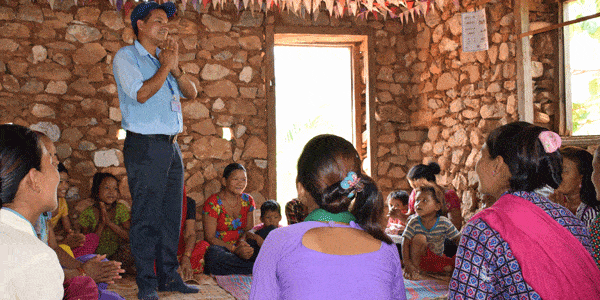
Health Care Heroes
Driven to help mothers and children, health workers in remote regions around the globe often face treacherous conditions.
September 14, 2017
Driven to help mothers and children, health workers providing services in remote regions around the globe often face treacherous conditions.
Shankar Bahadur Shah, a Social Mobilizer, and Pramila Dangal, a health worker, provide critical support for mothers and children participating in Project HOPE’s health care program in remote Nepal. The team was headed toward a remote village in Nepal where they planned to conduct health education and counseling sessions for mothers seeking immunizations for their children.
As they approached the Manahari River, conditions looked normal and they began to cross. Unfortunately, the water level swelled rapidly and unexpectedly due to heavy rainfall upriver. The current became too strong and both lost footing, becoming separated from each other and from their belongings. A vaccine box and documents were swept downstream. Shankar managed to swim across the river 300 meters downstream, but Pramila could not regain her foothold and continued to be carried downriver. Shankar reacted immediately, frantically swimming toward her and ultimately pulling her to shore. Both were injured and lost some of their belongings, but they were happy to be alive.
Bruised, shaken, and soaking wet – but undaunted – the pair continued on to Panjani Village.
Once they arrived, they led a SPARSH-M event (sparsh means soft touch) for a mothers group. The next day they traveled to Raksirang Village for yet another event. The overall goal of the SPARSH-M program is to strengthen the Maternal Newborn & Child health service delivery system by:
- Increasing access to maternal, neonatal and child health services, especially for marginalized and underserved populations
- Improving key hygiene practices by increasing access and providing hygiene education
A lack of bridges and roads, along with unpredictable elements, contribute to the geographical inaccessibility of health care for many in remote villages, but these dedicated health care workers are willing to brave the natural hazards to help the hard to reach.